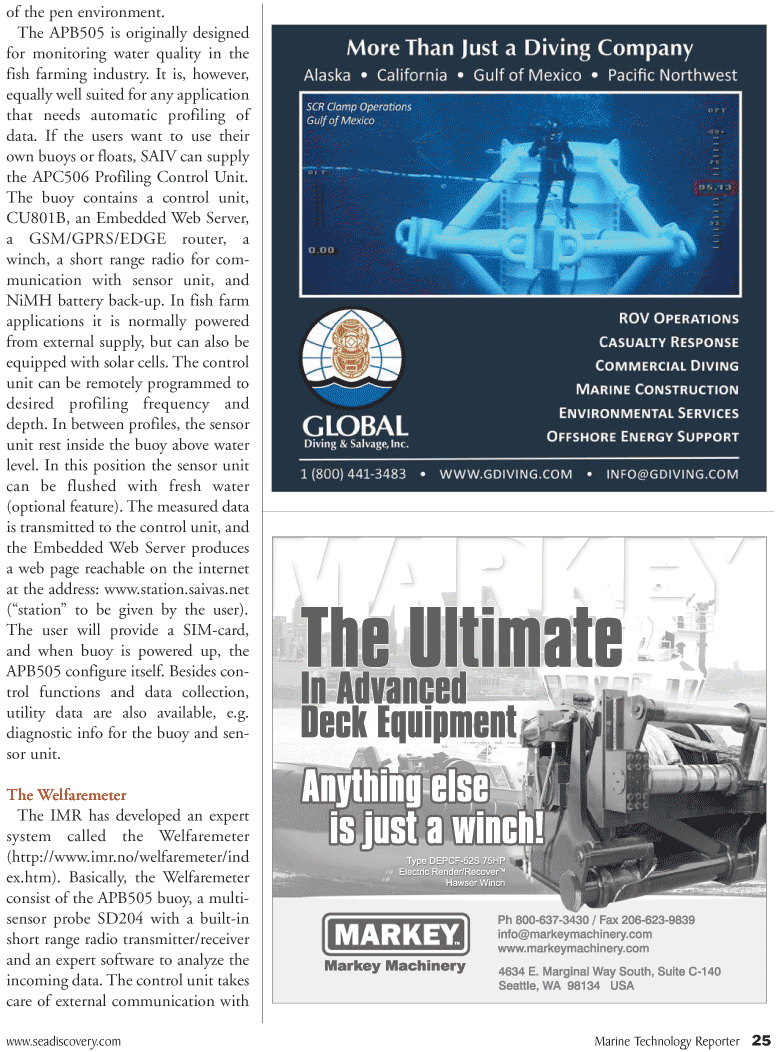
Page 25: of Marine Technology Magazine (April 2011)
Oil & Gas SubSea Monitoring
Read this page in Pdf, Flash or Html5 edition of April 2011 Marine Technology Magazine
www.seadiscovery.com Marine Technology Reporter 25 of the pen environment.
The APB505 is originally designed for monitoring water quality in the fish farming industry. It is, however, equally well suited for any application that needs automatic profiling of data. If the users want to use their own buoys or floats, SAIV can supply the APC506 Profiling Control Unit.
The buoy contains a control unit,
CU801B, an Embedded Web Server, a GSM/GPRS/EDGE router, a winch, a short range radio for com- munication with sensor unit, and
NiMH battery back-up. In fish farm applications it is normally powered from external supply, but can also be equipped with solar cells. The control unit can be remotely programmed to desired profiling frequency and depth. In between profiles, the sensor unit rest inside the buoy above water level. In this position the sensor unit can be flushed with fresh water (optional feature). The measured data is transmitted to the control unit, and the Embedded Web Server produces a web page reachable on the internet at the address: www.station.saivas.net (“station” to be given by the user).
The user will provide a SIM-card, and when buoy is powered up, the
APB505 configure itself. Besides con- trol functions and data collection, utility data are also available, e.g. diagnostic info for the buoy and sen- sor unit.
The Welfaremeter
The IMR has developed an expert system called the Welfaremeter (http://www.imr.no/welfaremeter/ind ex.htm). Basically, the Welfaremeter consist of the APB505 buoy, a multi- sensor probe SD204 with a built-in short range radio transmitter/receiver and an expert software to analyze the incoming data. The control unit takes care of external communication with

 24
24

 26
26
